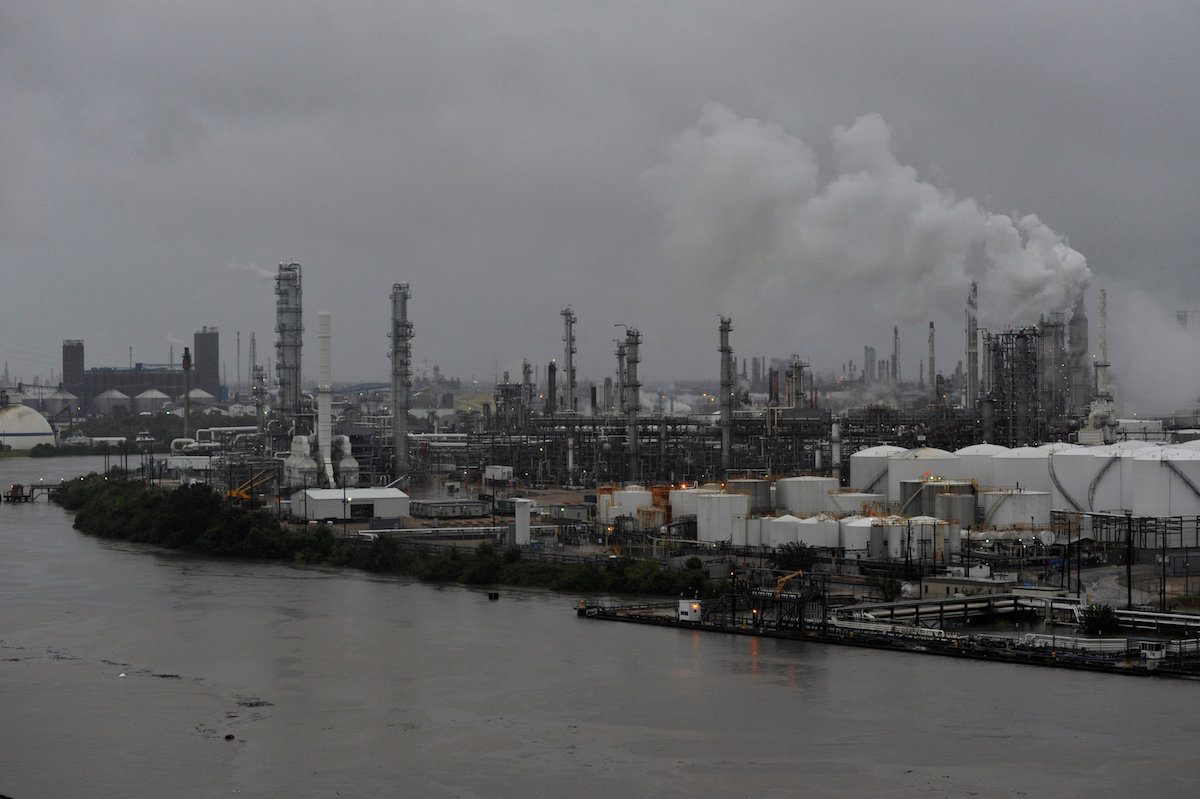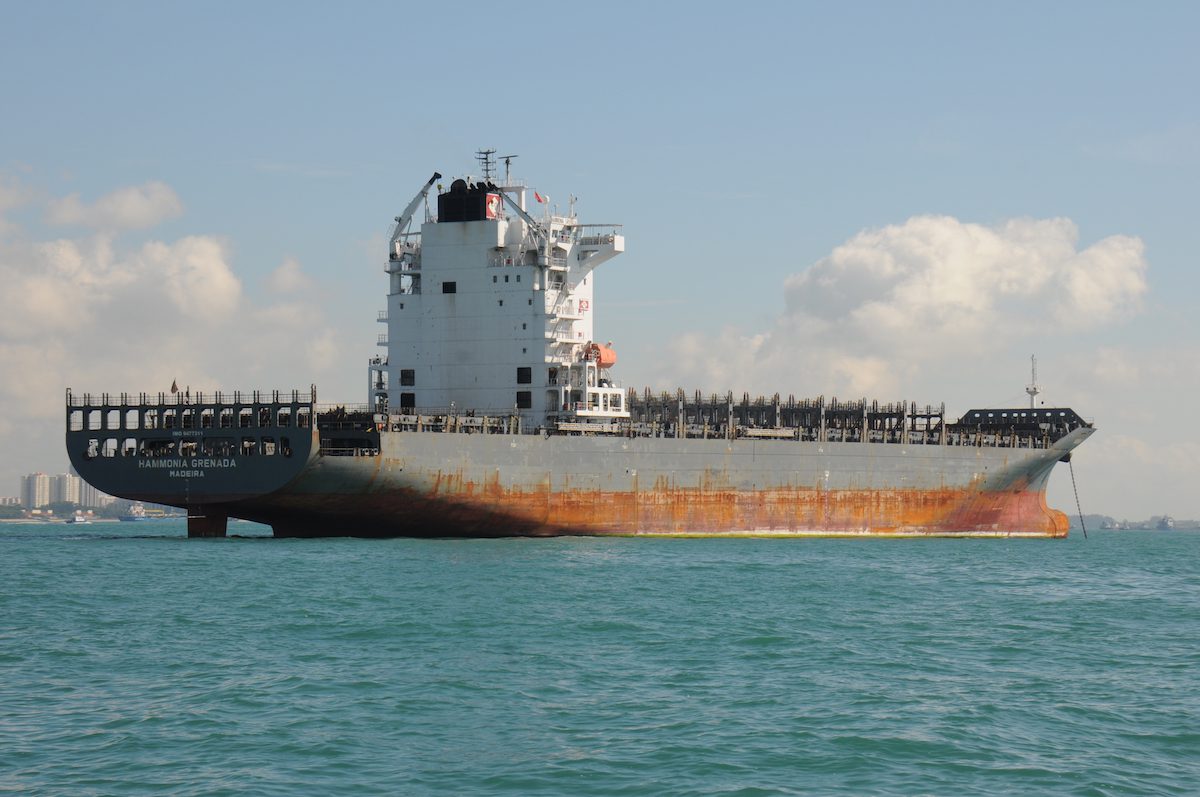By Rebecca Spalding and Joe Carroll (Bloomberg) — A deluge of rain and rising floodwaters left Houston immersed and helpless, crippling a global center of the oil industry and testing the economic resiliency of a state that’s home to almost 1 in 12 U.S. workers.Tropical Storm Harvey, which made landfall as a category 4 hurricane, has drifted back toward the Gulf of Mexico and is poised to regain strength before crashing ashore again, this time on the Texas-Louisiana border. The full extent of Harvey’s toll won’t be known for days, with downpours forecast that are measured in feet rather than inches.
“The damage will be horrific,” Texas Governor Greg Abbott said in an ABC television interview Monday morning. “This is going to take years for us to be able to build out the repairs that are going to be needed to overcome this flooding and hurricane disaster.”
Harvey, which has killed at least two people, will displace more than 30,000 residents, a number sure to climb now that the Army Corps of Engineers has begun to release water from two dams west of the nation’s fourth-largest city, flooding more neighborhoods. More than 450,000 residents will require assistance, according to the Federal Emergency Management Agency, which said it will be at work in Houston for years.
About one quarter of oil and natural gas production in the Gulf of Mexico and more than 10 percent of U.S. refining capacity has been shuttered. Crops, livestock and drinking water are under threat, and rail shipments near Houston have been delayed.
‘Fully Engaged’
The recovery will challenge a politically torn nation’s capacity to rebuild and represents the Trump administration’s first externally inflicted crisis. The U.S. can draw on the lessons of hurricanes Katrina in 2005 and Sandy in 2012, which ravaged New Orleans and New York and tested the resiliency of the nation’s response.
Harvey’s costs may mount to $30 billion when including expenses tied to business interruption, infrastructure, the power grid and labor force, according to Chuck Watson, a risk modeler with Enki Research. He expects less than a third of that sum will be covered by the insurance industry. Katrina, the most expensive hurricane to hit the U.S., cost about $118 billion, while Sandy in 2012 cost about $75 billion.
The White House has taken pains to demonstrate that Trump is engaged in marshaling the resources for the disaster in the region of about 6.8 million people, and the president plans to travel to Texas on Tuesday. Vice President Mike Pence was the administration’s public voice on the storm Monday morning, calling into Texas radio stations and conservative host Rush Limbaugh’s national show to say that Trump and his team were doing all they could.
“The president has been continuously updated, fully engaged,” he told San Antonio radio station KTSA.
The disaster isn’t done. Though Harvey drenched Houston with as much as 30 inches (76 centimeters) of rain, downpours will last through the week and an additional 15 to 25 inches could fall, the National Hurricane Center said.
Saving Lives
The greater Houston area, which includes eight counties, covers 8,778 square miles, an area larger than New Jersey. It’s a loosely organized city with multiple centers of commerce, defined by vast and looping highways, strip malls and subdivisions. While the city has battled some of the nation’s worst deluges, elected officials, meteorologists and emergency managers say it’s never faced anything like the current floods, which turned freeways into rivers and neighborhoods into lakes.
The city’s fire department responded to more than 5,500 calls over the past 24 hours, Mayor Sylvester Turner said, and the emergency center received 75,000 calls as of 9 a.m. Monday, with 10,000 more pending.
The state’s 12,000-strong National Guard was activated, and volunteers joined emergency teams as thousands of people fled to rooftops and higher ground. Houston Police rescued 2,000 people, Chief Art Acevedo said in a televised press conference.
Turner said about 5,500 people were in shelters and that figure would rise exponentially.
“The emotional cost that this storm is having, that’s hard to measure,” he said. “For people in the shelters and people at home, the emotional cost — that’s what we have to be sensitive to and respond to.”
The nation’s most diverse city, Houston’s economy has boomed even as the price of oil has lagged. The number of people employed in the greater metropolitan area has increased by more than 20 percent since the end of 2009 to 3.1 million people, according to data compiled by Bloomberg. If Houston were its own country, its economy would be the world’s 30th largest, according to city statistics.
In addition to being an international energy capital, Houston is a locus for other industries, with 18 Fortune 500 companies.
Houston-based Texas Medical Center, for instance, is the world’s largest medical complex, employing more than 106,000 people. It has hospitals with 9,200 patient beds that do 180,000 surgeries a year. But the sprawling campus sits next to the now-flooding Brays Bayou.
Sudden Need
The storm promises to test the region’s economy.
The Texas labor market is already tight, and rebuilding probably will require tens of thousands of workers. That’s going to require incentives — usually in the form of higher wages — to pull engineers, tradesman and laborers from around the region. The Federal Reserve district banks in Dallas, Atlanta and St. Louis have already reported hiring difficulties that are putting upward pressure on wages.
When floodwaters recede, the national economic fallout will likely be seen first in weekly jobless-claims data, and also in monthly retail sales and industrial-production figures. If gasoline prices stay elevated, that could put upward pressure on the consumer price index.
Gasoline futures scored their biggest advance in almost six months Monday as more than a million barrels of fuel-making capacity was knocked offline. Refineries, natural gas fields and offshore drilling rigs were shut down. As Harvey barreled back toward the sea and threatened to intensify anew, analysts at Tudor Pickering Holt & Co. estimated that as much as 30 percent of the nation’s refining power was imperiled.
Ports along a 250-mile stretch of Texas coast were shut to tankers. Fourteen vessels laden with a combined 7 million barrels of crude from as far afield as Brazil and Colombia were drifting off the coastline, waiting for the all clear.
For Bloomberg’s refinery outages and events page, click here
Now threatened by a hurricane, Houston was forged by one. In 1900, a storm hit nearby rival Galveston, then a boom city and one of the country’s busiest ports. That hurricane remains one of the deadliest natural disasters in U.S. history, causing more than 8,000 deaths.
After that storm, local officials pushed to open a deepwater inland port in Houston to serve Texas’s burgeoning oil and agricultural exports. The Port of Houston opened in 1914, with then-President Woodrow Wilson celebrating by firing a cannon via remote control from Washington. Houston’s population took off, far outpacing its former rival to become the leading city of Texas by 1930. From the bayous and marshes rose a metropolis.
First Need
Its new challenge unfolded Sunday as floodwaters began sloshing into the downtown business district from three directions. Before nightfall, electrical systems beneath the streets had become saturated, knocking out power on block after block. By evening, the skyline was mostly dark, save for the steady, urgent flicker of emergency exit lights in the corridors of a few glass-walled high-rises.
A Spaghetti Warehouse restaurant on the north end of downtown was engulfed in several feet of violently rushing water, causing a large chunk of outer wall to calve off. In the business district, water swamped the the 91-year-old Lancaster Hotel, prompting the evacuation of guests four blocks east to the Magnolia Hotel. Guests there were advised to fill their bathtubs with water in case potable supplies failed.
Mayor Turner said the city that has weathered oil’s boom-and-bust cycles for decades will prove resilient.
“We’ll do whatever we need to do to address this situation,” he said. “We’ll worry about the cost and all of that later.”
© 2017 Bloomberg L.P

 Join The Club
Join The Club












